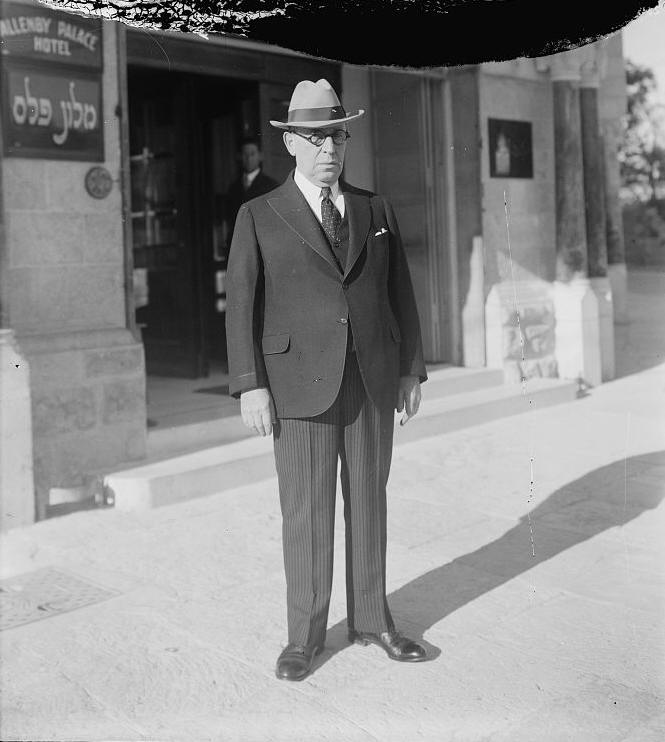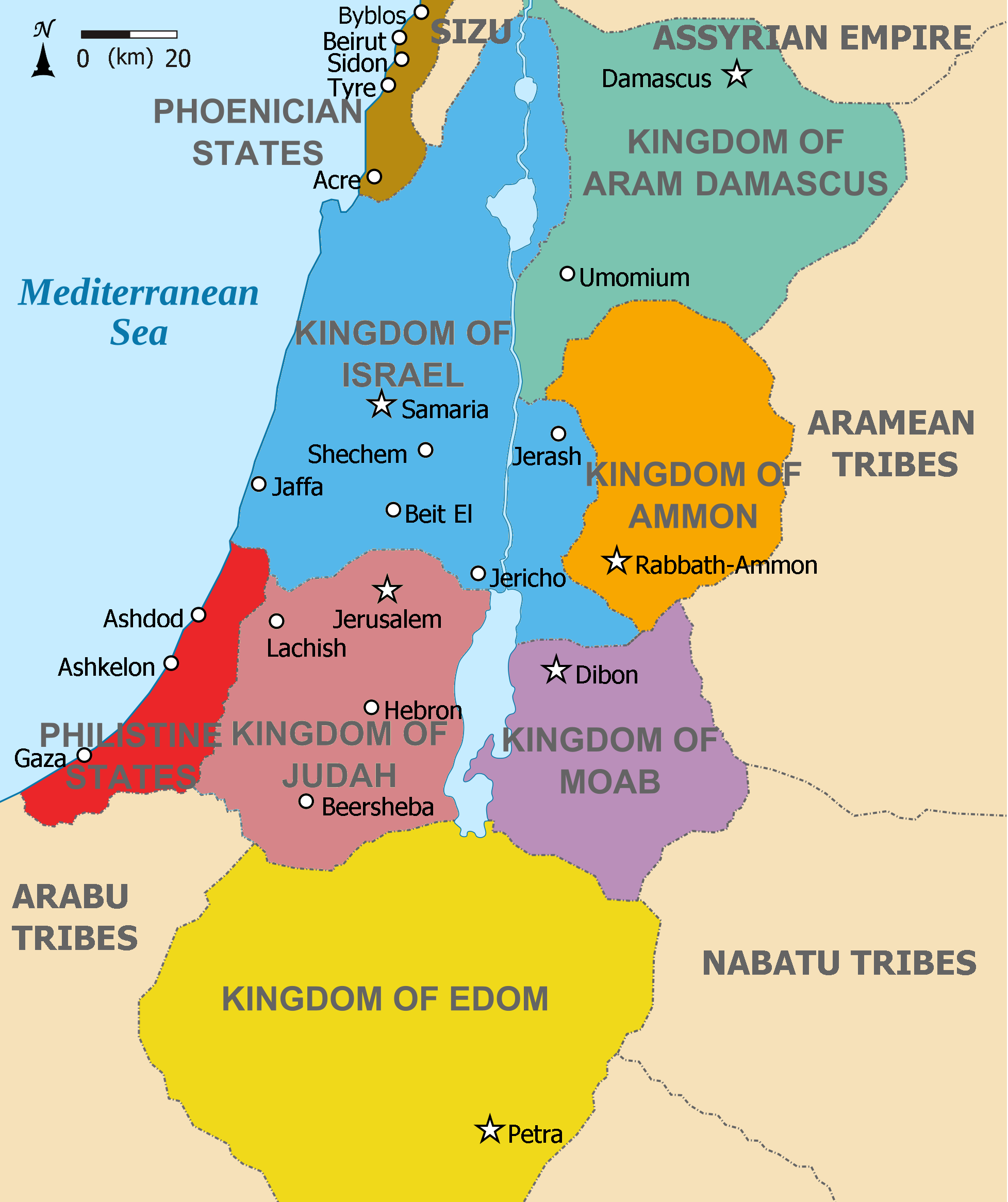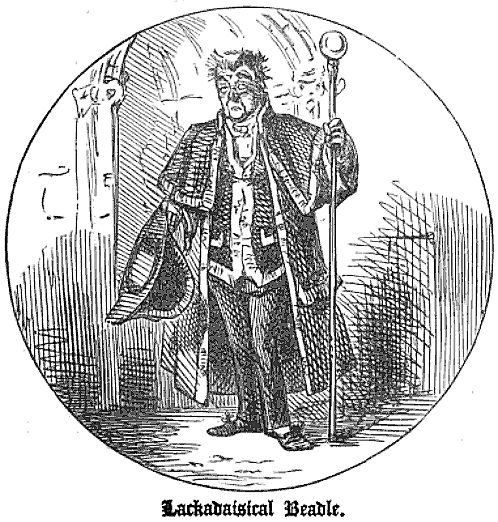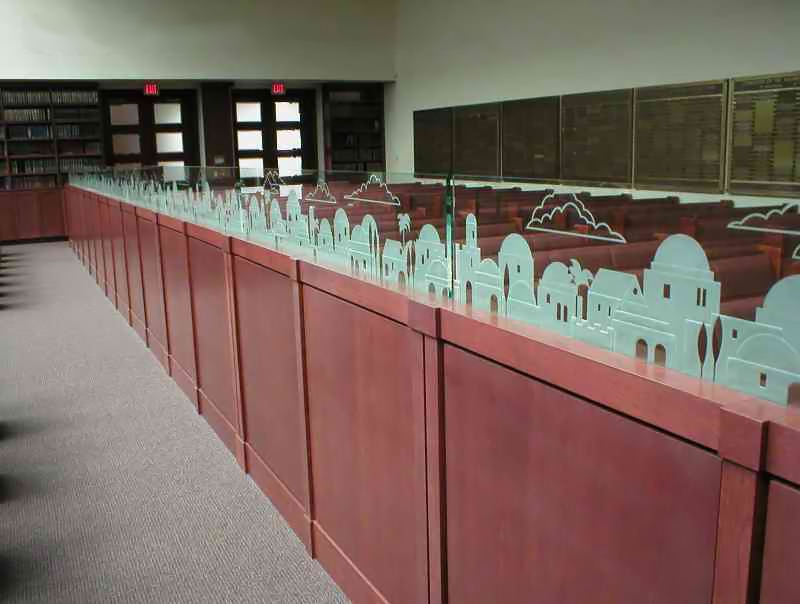|
1929 Palestine Riots
The 1929 Palestine riots, Buraq Uprising ( ar, ثورة البراق, ) or the Events of 1929 ( he, מאורעות תרפ"ט, , ''lit.'' Events of 5689 Anno Mundi), was a series of demonstrations and riots in late August 1929 in which a longstanding dispute between Muslims and Jews over access to the Western Wall in Jerusalem escalated into violence. The riots took the form, for the most part, of attacks by Arabs on Jews accompanied by destruction of Jewish property. During the week of riots, from 23 to 29 August, 133 Jews were killed by Arabs, and 339 Jews were injured, most of whom were unarmed. There were 116 Arabs killed and at least 232 wounded, mostly by the Mandate police suppressing the riots. Around 20 Arabs were killed by Jewish attackers and indiscriminate British gunfire. After the riots, 174 Arabs and 109 Jews were charged with murder or attempted murder; around 40% of Arabs and 3% of Jews were subsequently convicted. During the riots, 17 Jewish communities were e ... [...More Info...] [...Related Items...] OR: [Wikipedia] [Google] [Baidu] |
Intercommunal Violence In Mandatory Palestine
The intercommunal conflict in Mandatory Palestine was the civil, political and armed struggle between Palestinian Arabs and Jewish Yishuv during the British rule in Mandatory Palestine, beginning from the violent spillover of the Franco-Syrian War in 1920 and until the onset of the 1948 Arab–Israeli War. Background Zionist movement during Ottoman period Zionist leaders and advocates followed conditions in the land of Israel closely and travelled there regularly. Their concern, however, was entirely with the future of Jewish settlement. The future of the land's Arab inhabitants concerned them as little as the welfare of the Jews concerned Arab leaders. During the movement's formative stages, Zionist negotiators with stronger political powers (such as the British) corresponded enthusiastically while remaining silent about the inhabitants of Palestine, who numbered just under half a million during the late 19th century. According to Anita Shapira, among 19th and early 20th ce ... [...More Info...] [...Related Items...] OR: [Wikipedia] [Google] [Baidu] |
Temple Mount
The Temple Mount ( hbo, הַר הַבַּיִת, translit=Har haBayīt, label=Hebrew Hebrew (; ; ) is a Northwest Semitic language of the Afroasiatic language family. Historically, it is one of the spoken languages of the Israelites and their longest-surviving descendants, the Jews and Samaritans. It was largely preserved ..., lit=Mount of the House [of the Holy]), also known as al-Ḥaram al-Sharīf (Arabic: الحرم الشريف, lit. 'The Noble Sanctuary'), al-Aqsa Mosque compound, or simply al-Aqsa Mosque (, ''al-Masjid al-Aqṣā'', lit. 'The Furthest Mosque'), * ''Where Heaven and Earth Meet'', page 13: "Nowadays, while oral usage of the term Haram persists, Palestinians tend to use in formal texts the name Masjid al-Aqsa, habitually rendered into English as 'the Aqsa Mosque'" * * * *PEF Survey of Palestine, 1883, iarchive:surveyofwesternp00warruoft/page/119, volume III Jerusalem, p.119: "The Jamia el Aksa, or 'distant mosque' (that is, distant from Mecca), is ... [...More Info...] [...Related Items...] OR: [Wikipedia] [Google] [Baidu] |
Palestine (region)
Palestine ( el, Παλαιστίνη, ; la, Palaestina; ar, فلسطين, , , ; he, פלשתינה, ) is a geographic region in Western Asia. It is usually considered to include Israel and the State of Palestine (i.e. West Bank and Gaza Strip), though some definitions also include part of northwestern Jordan. The first written records to attest the name of the region were those of the Twentieth dynasty of Egypt, which used the term "Peleset" in reference to the neighboring people or land. In the 8th century, Assyrian inscriptions refer to the region of "Palashtu" or "Pilistu". In the Hellenistic period, these names were carried over into Greek, appearing in the Histories of Herodotus in the more recognizable form of "Palaistine". The Roman Empire initially used other terms for the region, such as Judaea, but renamed the region Syria Palaestina after the Bar Kokhba revolt. During the Byzantine period, the region was split into the provinces of Palaestina Prima, Pal ... [...More Info...] [...Related Items...] OR: [Wikipedia] [Google] [Baidu] |
Grand Mufti Of Jerusalem
The Grand Mufti of Jerusalem is the Sunni Muslim cleric in charge of Jerusalem's Islamic holy places, including the Al-Aqsa Mosque. The position was created by the British military government led by Ronald Storrs in 1918.See Islamic Leadership in Jerusalem for further detailsThe terminology was used as early as 1918. For example: states that Storrs wrote on November 19, 1918 "the Muslim element requested the Grand Mufti to have the name of the Sharif of Mecca mentioned in the Friday prayers as Caliph" Since 2006 it has been held by Muhammad Hussein. History British Mandate While Palestine was under British Mandate, the Grand Mufti of Jerusalem was a position created by the British Mandate authorities. The creation of the new title was intended by the British to "enhance the status of the office". When Kamil al-Husayni died in 1921, the British High Commissioner Herbert Samuel appointed Mohammad Amin al-Husayni to the position. Amin al-Husayni, a member of the al-Husa ... [...More Info...] [...Related Items...] OR: [Wikipedia] [Google] [Baidu] |
Amin Al-Husayni
Mohammed Amin al-Husseini ( ar, محمد أمين الحسيني 1897 – 4 July 1974) was a Palestinian Arab nationalist and Muslim leader in Mandatory Palestine. Al-Husseini was the scion of the al-Husayni family of Jerusalemite Arab notables, who trace their origins to the eponymous grandson of Muhammad. Husseini received education in Islamic, Ottoman, and Catholic schools. In 1912, he went to pursue further studies in Cairo's ''Dar al-Da'wa wa al-Irshad'', an Islamic seminary under the tutelage of Salafist theologian Muhammad Rashid Rida. After studying there for two years, he went on to serve in the Ottoman army in World War I. At war's end he stationed himself in Damascus as a supporter of the Arab Kingdom of Syria. Following the Franco-Syrian War and the collapse of Arab Hashemite rule in Damascus, his early position on pan-Arabism shifted to a form of local nationalism for Palestinian Arabs and he moved back to Jerusalem. From as early as 1920 he actively opposed Z ... [...More Info...] [...Related Items...] OR: [Wikipedia] [Google] [Baidu] |
Norman Bentwich
Norman de Mattos Bentwich (28 February 1883 – 8 April 1971) was a British barrister and legal academic. He was the British-appointed attorney-general of Mandatory Palestine and a lifelong Zionist. Biography Early life Norman Bentwich was the oldest son of British Zionist Herbert Bentwich. He attended St Paul's School in London and Trinity College, Cambridge, where he was said to be the "favorite pupil" of John Westlake. Bentwich was a delegate at the annual Zionist Congresses from 1907 to 1912. He paid his first visit to Palestine in 1908. He was commissioned in the Egyptian Camel Transport Corps on 1 January 1916. He was awarded the Military Cross and, in 1919, received the OBE. Mandatory Palestine administration During the British military administration of Palestine, Bentwich served as Senior Judicial Officer, which continued in the civil administration after 1920 as Legal Secretary. The title was soon changed to Attorney-General, a post he held until 1931. Bentw ... [...More Info...] [...Related Items...] OR: [Wikipedia] [Google] [Baidu] |
Beadle
A beadle, sometimes spelled bedel, is an official of a church or synagogue who may usher, keep order, make reports, and assist in religious functions; or a minor official who carries out various civil, educational, or ceremonial duties on the manor. The term has pre- Conquest origins in Old English, deriving from the Old English ''bydel'' ("herald, messenger from an authority, preacher"), itself deriving from ''beodan'' ("to proclaim", which has a modern descendant in the English verb ''bid''). In Old English it was a title given to an Anglo-Saxon officer who summoned householders to council. It is also known in Medieval Latin as ''bedellus''. The Domesday Book refers to Beadles as ''bedelli'' or undersheriffs of manors. In religion In England, the word came to refer to a parish constable of the Anglican Church, one often charged with duties of charity. A famous fictional constabulary beadle is Mr. Bumble from Charles Dickens's classic novel ''Oliver Twist'', who ... [...More Info...] [...Related Items...] OR: [Wikipedia] [Google] [Baidu] |
Status Quo
is a Latin phrase meaning the existing state of affairs, particularly with regard to social, political, religious or military issues. In the sociological sense, the ''status quo'' refers to the current state of social structure and/or values. With regard to policy debate, it means how conditions are, contrasted with a possible change. For example: "The countries are now trying to maintain the ''status quo'' with regard to their nuclear arsenals." To maintain the ''status quo'' is to keep things the way they presently are. The related phrase '' status quo ante'', literally "the status before", refers to the state of affairs that existed previously. Political usage Via social movements the status quo might be overhauled. These seek to alleviate or prevent a particular issue and often to shape social feeling and cultural expression of a society or nation. The status quo is at least in part rejected by their protagonists – progressives – leading the movement. Advo ... [...More Info...] [...Related Items...] OR: [Wikipedia] [Google] [Baidu] |
Ottoman Empire
The Ottoman Empire, * ; is an archaic version. The definite article forms and were synonymous * and el, Оθωμανική Αυτοκρατορία, Othōmanikē Avtokratoria, label=none * info page on book at Martin Luther University) // CITED: p. 36 (PDF p. 38/338) also known as the Turkish Empire, was an empire that controlled much of Southeast Europe, Western Asia, and North Africa, Northern Africa between the 14th and early 20th centuries. It was founded at the end of the 13th century in northwestern Anatolia in the town of Söğüt (modern-day Bilecik Province) by the Turkoman (ethnonym), Turkoman tribal leader Osman I. After 1354, the Ottomans crossed into Europe and, with the Ottoman wars in Europe, conquest of the Balkans, the Ottoman Anatolian beyliks, beylik was transformed into a transcontinental empire. The Ottomans ended the Byzantine Empire with the Fall of Constantinople, conquest of Constantinople in 1453 by Mehmed the Conqueror. Under the reign of Sule ... [...More Info...] [...Related Items...] OR: [Wikipedia] [Google] [Baidu] |
Edward Keith-Roach
Edward Keith-Roach (Born 1885 Gloucester, England - died 1954). Keith-Roach was the British Colonial administrator during the British mandate on Palestine, who also served as the governor of Jerusalem Jerusalem (; he, יְרוּשָׁלַיִם ; ar, القُدس ) (combining the Biblical and common usage Arabic names); grc, Ἱερουσαλήμ/Ἰεροσόλυμα, Hierousalḗm/Hierosóluma; hy, Երուսաղեմ, Erusałēm. i ... from 1926 to 1945 (excluding a period in the 1930s when he was governor of the Galilee). He was posted during a period of great political upheaval, Reuters labelling him ‘the Pasha of Jerusalem’. References Edward Keith-Roach is the author of a number of books about Palestine, and an Autobiography: * (1922):The Handbook of Palestine Publisher: Macmillan Company, 1922 * (1930): The Handbook of Palestine and Trans-Jordan Publisher: Macmillan Company, 1930 * (1994): Pasha of Jerusalem: Memoirs of a District Commissioner Un ... [...More Info...] [...Related Items...] OR: [Wikipedia] [Google] [Baidu] |
Room Divider
A room divider is a screen or piece of furniture placed in a way that divides a room into separate areas. Room dividers are used by interior designers and architects as means to divide space into separate distinct areas. There are a number of different types of room dividers such as cubicle partitions, pipe and drape screens, shoji screens, and walls. Room dividers can be made from many materials, including wood, fabric, plexiglass, framed cotton canvas, pleated fabric or mirrors. Plants, shelves or railings might also be used as dividers. Portable room dividers have folded wall panels supported on wheels. History The folding room screens were found in China in the 7th century where they were mainly used by royalty. They were very heavy and ornate, and were not moved around. In the 8th century, the Japanese began using lighter, more portable room dividers for tea ceremonies, religious events and outdoor processions. European travelers developed their own version of Asian scre ... [...More Info...] [...Related Items...] OR: [Wikipedia] [Google] [Baidu] |
Mechitza
A ''mechitza'' ( he, מחיצה, partition or division, pl.: , ) in Judaism, is a partition, particularly one that is used to separate men and women. The rationale in halakha (Jewish law) for a partition dividing men and women is derived from the Babylonian Talmud. A divider in the form of a balcony was established in the Temple in Jerusalem for the Simchat Beit HaShoeivah ceremony, a time of great celebration and festivity. The divider was first established to preserve modesty and attention during this time. During the mid-20th century, a substantial number of Orthodox synagogues did not have mechitzot. However, the Orthodox Union (OU), the main body of Modern Orthodox synagogues in the United States, adopted a policy of not accepting as new members synagogues without mechitzot, and strongly encouraged existing synagogues to adopt them. Men and women are generally not separated in most Conservative synagogues, but it is a permissible option within Conservative Judaism; some ... [...More Info...] [...Related Items...] OR: [Wikipedia] [Google] [Baidu] |

.jpg)





